Popular Metal Sword Types and Their Qualities
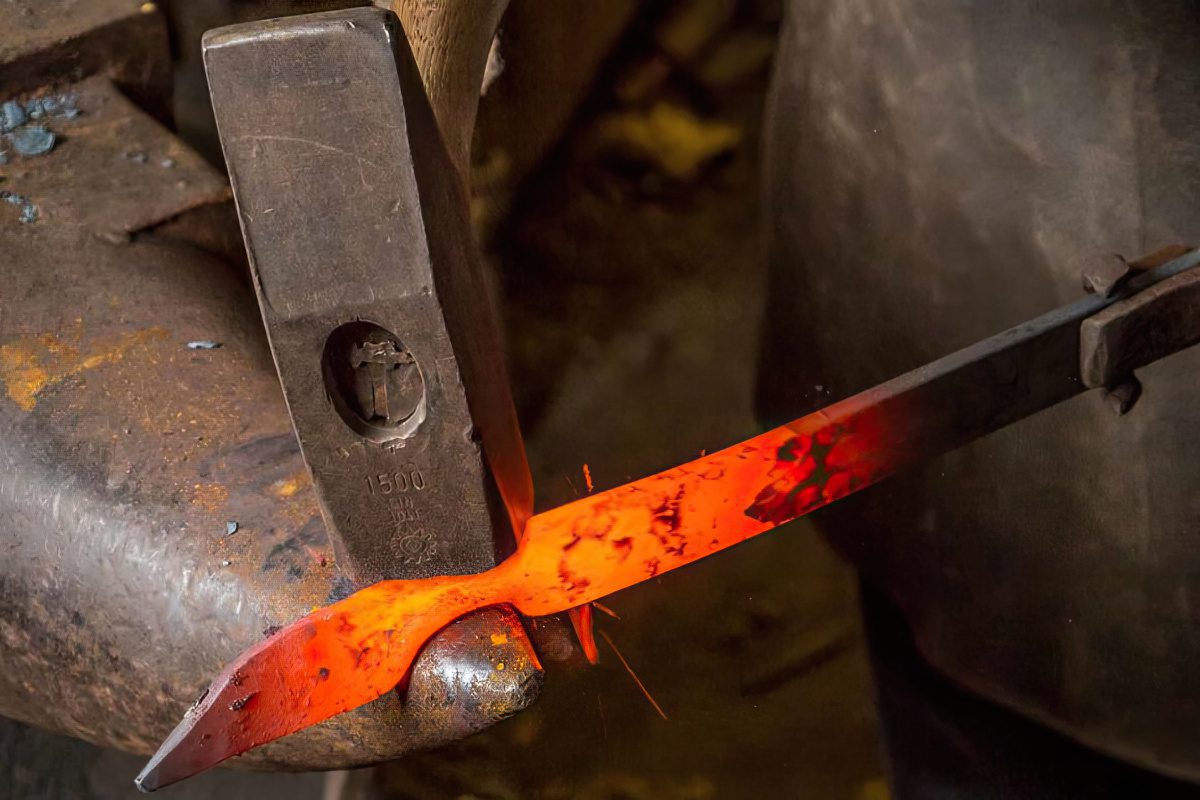
What’s in this article?
Throughout history, bladesmiths and swordsmiths have specialized in the art of creating bladed weapons. Through the ages, swords have been crafted using a wide range of materials, methods, and equipment. Although there are numerous factors to consider when assessing a sword, strength, flexibility, hardness, and balance are among the most important.
It would take a lot of effort and testing different metals to get all four factors right and create the perfect sword. In this article, we are going to discuss the most popular metal sword types and explain a bit about their qualities. We’ll start with the most modern and cutting-edge of today’s sword technology as well as the earliest known sword metals, including some interesting hybrids.
Steel Swords

For good reason, steel is utilized in the production of swords more than any other metal. It is by far the best and most effective metal that can give the sword not just a beautiful shine but make it effective and deadly in combat. It is also an ideal metal for everyday use, like cutting through vegetation, wood, and agriculture.
Steel can be made from a wide variety of metal alloys, all of which are technically considered metal. The most prevalent type of steel used in the production of swords is high-carbon steel, followed by stainless steel, tool steel, spring steel, and the popular Damascus steel.
Steel is the strongest and most effective metal to make a sword in the present and past days. Despite that being the case, if you’re buying medieval swords or even a fantasy Demon Slayer Sword made out of steel, always ensure that the process of sword-making is precise. Even a wrongly heat-treated steel sword could make it too lax, and it could easily break apart.
High Carbon

One of the most frequently bought steel swords are blades made of high carbon steel simply because they are more durable and stay sharp. However, they have some weaknesses, such as when exposed to the environment, the blades rust since they aren’t highly corrosion-resistant. High-carbon steel blades are the greatest for maintaining a razor’s edge, although they require extra maintenance.
Blades made from High Carbon Steel would make for an excellent weapon in battle, as well as for testing the cutting power of a blade or sword. So if you’re looking for an effective and battle-ready sword for slicing and wish to test its capabilities, High Carbon Steel is the way to go. An excellent example would be a short ninja Wakizashi or full tang long sword.
Stainless

Although stainless steel swords are also one of the most common, they serve little practical purpose and are mostly used for aesthetics. Stainless steel is less difficult to work with, resistant to corrosion and keeps a sharp edge longer than other metals.
This beautiful sword is good for decorative purposes but will go dull faster than other types of steel if used in combat. They are very popular for making historical replica swords like a steel Katana or even a short roman Gladius. They are also great for decorative cosplay swords from media such as anime like One Piece or the Game of Thrones series.
Spring
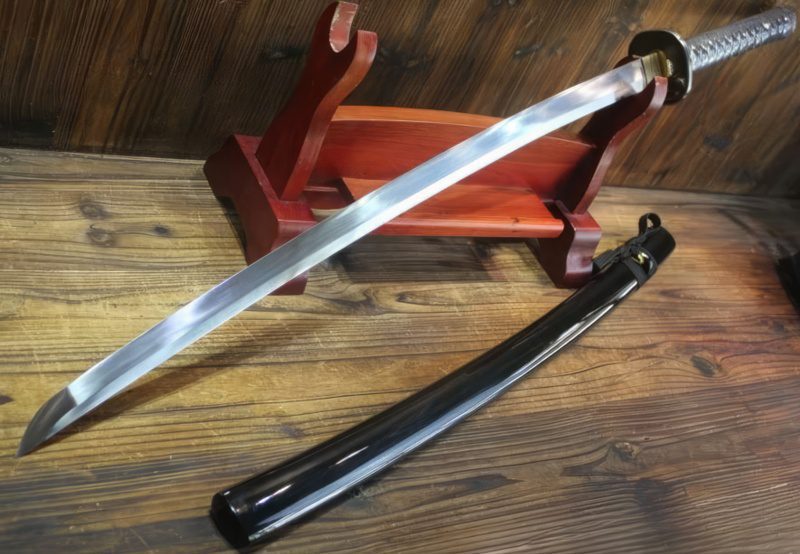
Although Spring steel is not nearly stainless, it is highly robust and durable due to the addition of chromium and silicon. As a result, this steel has a degree of malleability that no other steel comes close to.
Swords manufactured from this steel resist rust and maintain their sharpness, making them valuable swords for cutting and decorative purposes. The difference with carbon steel is that it’s made to be stronger, whereas spring steel is made to be more flexible. Spring steel is often more pliant than carbon steel due to its higher carbon content.
Tool
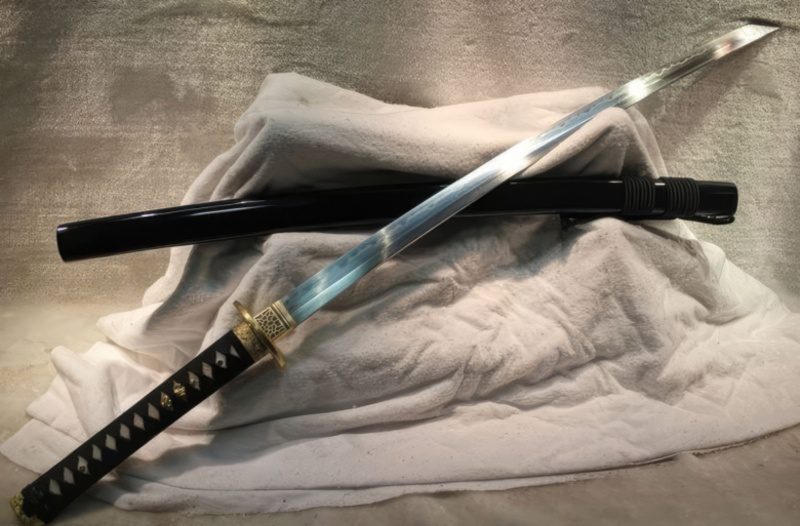
Swords can also be crafted from tool steel, another prevalent type of steel. Much more durable than stainless steel, tool steel is also more difficult to form. Compared to stainless or high-carbon steel, tool steel will only keep a sharp cutting edge for a short time, but it can still be used to forge a strong, versatile blade.
This type of steel is the best for utility tools like machetes, axes, sickles, and broad-bladed Viking Swords. A sword made of steel could be used against the wooden handles of these weapons with very destructive results.
Damascus
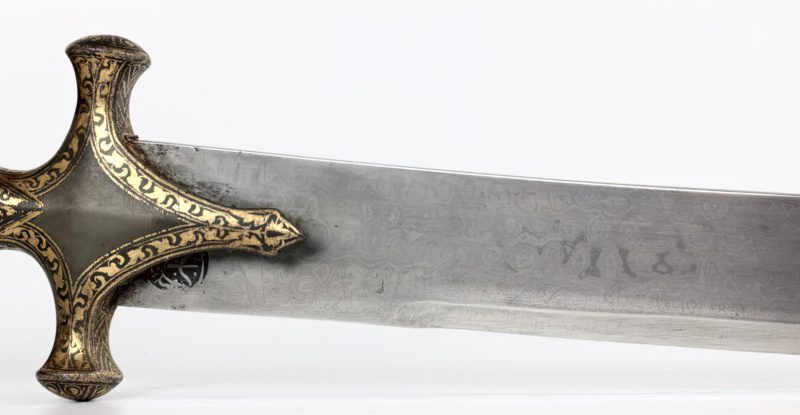
Damascus swords can be crafted from any steel by folding it to create a distinctive and rather beautiful wavy or water-like pattern. It is a method usually called Wootz or Crucible steel, which came from ancient India and was passed on to Europe, and it is known today as Damascus Steel.
This type of steel was the precursor to modern steel, which is iron completely melted down into a liquid state with carbon added to it. Although there are many misconceptions about it being far superior to regular steel, this is not entirely true. However, they are truly unique because of their looks.
Tamahagane

One of the most popular steels today, thanks to the mythologized status of the Japanese Samurai, is the Tamahagane. Tamahagane, sometimes called bloomed steel, is made by melting ore in a charcoal-fueled bloomery, slicing the resulting cake into smaller pieces, and refining the steel by hand.
The pattern is largely the product of the cut and folding process and the fact that the individual steel pieces aren’t all identical in composition and shape. Although possible and still a very good metal to make a samurai sword today, modern or mono steel is far better. However, having high-quality replicas of Japanese Swords that are made this way is truly a special thing.
Iron Swords

While iron swords have been around since the Early Iron Age (about the 12th century BC), they didn’t catch on until the 8th century BC. The edges became sharper and harsher on the flesh due to advancements in metals, which resulted in cutting weapons becoming more effective as fighting tools.
Although iron metal swords are seen with awe and admiration today, they still have several flaws. They tend to break rather than bend and are not ideal for combat. Iron is the easiest metal to extract from the earth, with the most abundance. Because of its strength, iron could be used to forge longer swords, and the quenching process would harden the metal and sharpen the blade.
Bronze Swords
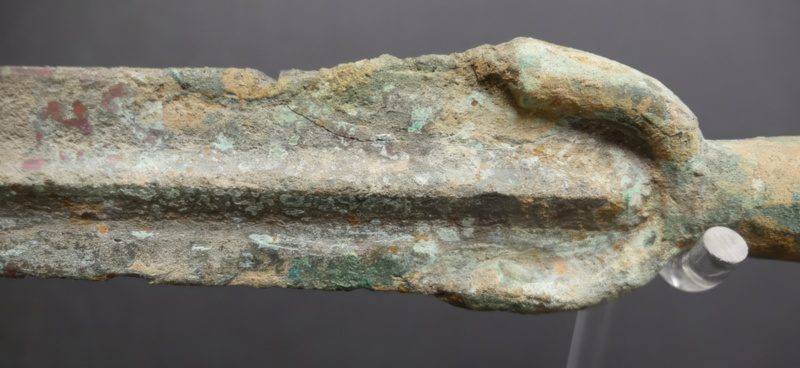
Short swords and knives were frequently crafted by bronze smiths throughout the Bronze Age (3300 BC – 1200 BC). Cold-working bronze produces a tough, resilient material. Bronze swords can be hammered into razor-sharp edges, but they bend more easily than their steel counterparts. Shortly after the discovery of iron and how to make steel stronger through alloying, bronze fell out of favor.
Beautiful bronze swords existed throughout history, but they are no match for steel when it comes to cutting power. They have also been used in warfare, typically taking the form of a sickle or a very short length to give the blade extra heft and resilience in combat. Oakeshott, a sword enthusiast, scholar, and devotee who’s published many works about bladed-edged weapons, considers the Bronze Sword the first real type of sword since it could be used for battle purposes, unlike the previous ceremonial swords.
Copper Swords

Copper alloys, such as copper-arsenic and copper-tin, were used to create the first functional metal swords meant to be used for decorative, ceremonial, or ritual purposes. Some scholars do not even place it in the sword category because they are almost completely ineffective for combat.
Copper isn’t the best material for blades. It’s not tough enough for use as a sword and is too soft and pliable to be useful for anything other than admiring it. They were mostly short, and even by today’s standards, making one isn’t easy because of the tendency to crack easily.
Gold Swords
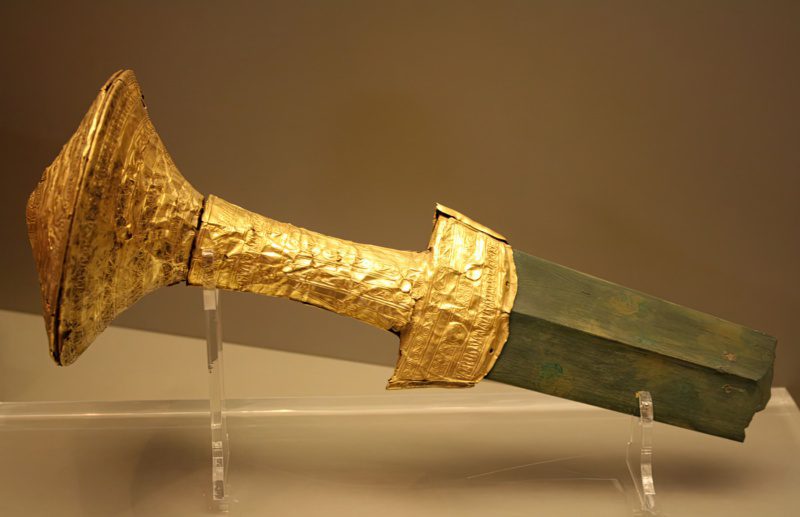
Folks may commonly ask why there aren’t any gold swords, as it is a very valuable and expensive material. The answer is simple; gold would make for an awful sword if used for fighting as it is too heavy and too soft to manufacture.
In its purest form, gold is unsuitable for combat purposes, but it would be splendid to look at. A single strike to the wide side with any other sword metal may cause it to split in two or bend. Even if you could raise it and swing it, it would be burdensome. But very beautiful decorations on the swords, like their guards, scabbards, and pommels, can be made of gold.
Meteorite Swords
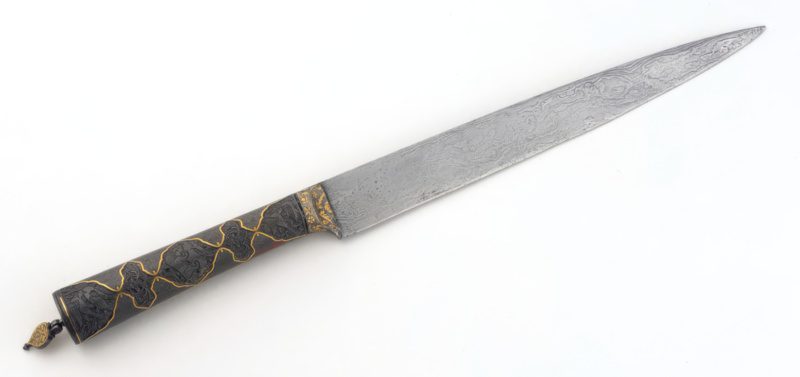
Any blade forged from meteoric iron is considered to be a meteorite sword. Meteoric iron is iron that was gathered when a meteorite hit the planet. The meteorite sword is a genuine historical artifact that has been, and currently is, in use. However, it lacks the power of magic or, more importantly, the superhuman strength of an iron or steel blade, as modern media would depict it.
Some researchers believe meteorite swords might be the first swords used in history and date back as far as 6,000 years. However, they weren’t widely used in battle since meteoric iron’s high nickel concentration renders it weak and reduces its effectiveness.
Other Metal Sword Types
Swords may be made from a wide variety of metals, but only a select few are efficient. Here we’ll go through a few alternate swords metals that you might consider.
Obsidian
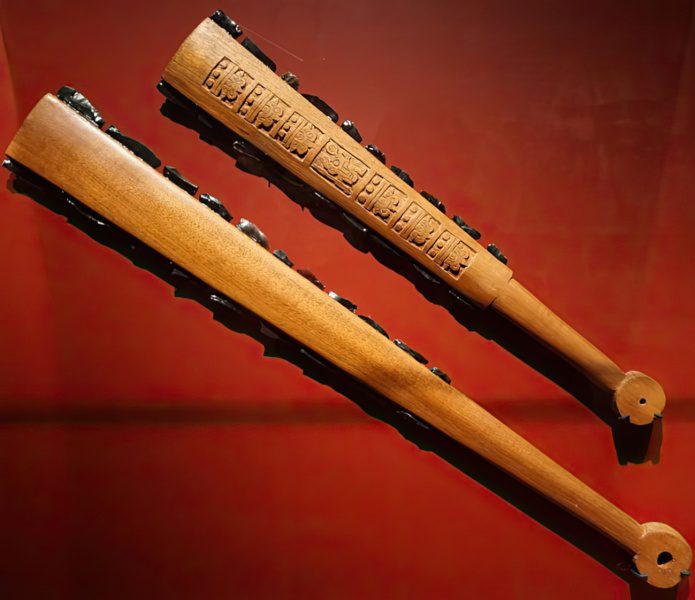
The metal known as obsidian which can be obtained from volcanic eruptions is tough but fragile. This implies that while it is brittle, it can be sharpened to dangerous levels. Obsidian may have been used to make extremely sharp tools like arrowheads and knives, but it is not ideal for building longer blades.
If it isn’t supported correctly, the weight of your strike could cause the obsidian to shatter. If it doesn’t shatter before reaching its intended target, it certainly will upon impact, making it a weak metal for combat. But obsidian has a history of being used in rituals and ceremonies and as swords of status.
Titanium
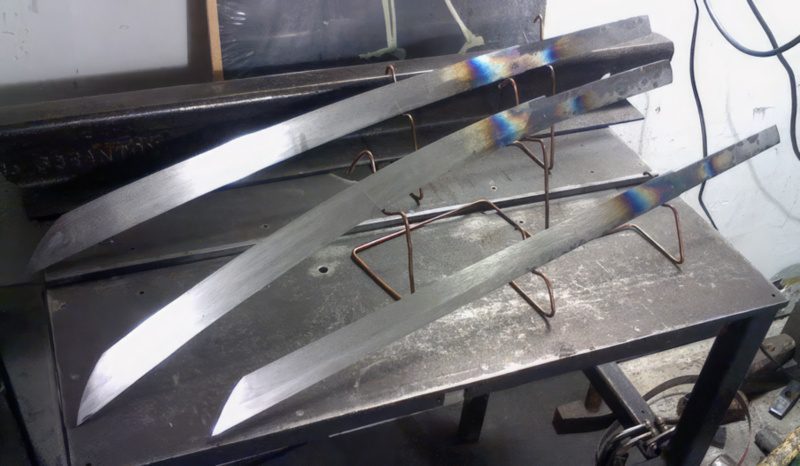
When it comes to sword blades, titanium’s light weight, strength, and corrosion resistance are all positive qualities; nonetheless, the metal is not perfect. Titanium swords are notoriously fragile and lose their edge quickly. Furthermore, their small weight renders them useless for cutting or blocking. Accordingly, high-carbon steel is still the best metal for sword blades, provided the steel is suitably tempered.
Despite their higher price tag, titanium blades are great for display purposes and non-contact martial arts training because they require little to no maintenance and are very resistant to corrosion. Although that is the case, titanium blades can be as high as four times the cost of stainless steel blades. Even when compared to ornamental swords with stainless steel blades, Titanium swords are more resistant to corrosion which is their strongest trait.
Aluminium
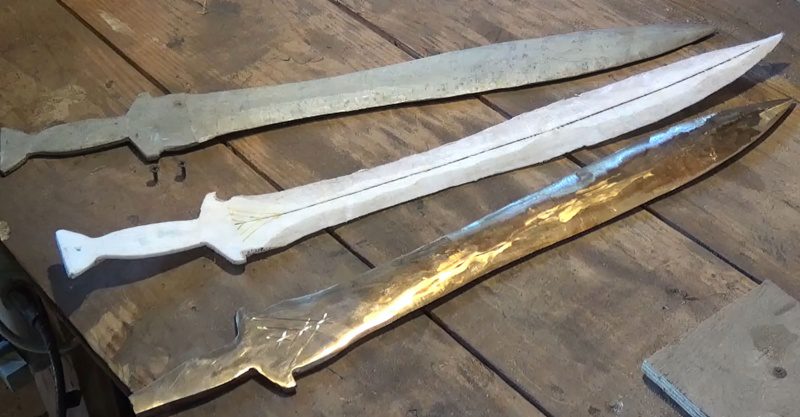
Using aluminum for a functional sword in battle is not ideal. This metal is utilized to build swords and can retain the shape of a blade, but it doesn’t hold up nearly as well as steel and wears out much more quickly due to its light weight.
These blades are ideal for novice swordsmen due to their low price and wide availability. It is impossible to achieve an edge as sharp as steel, making it a safer choice for beginners. Still, the material is also more susceptible to rust and corrosion and can be scratched easily, leaving visible marks on the blade. However, aluminum is readily available and recyclable, making these alternatives less expensive.
Gallium
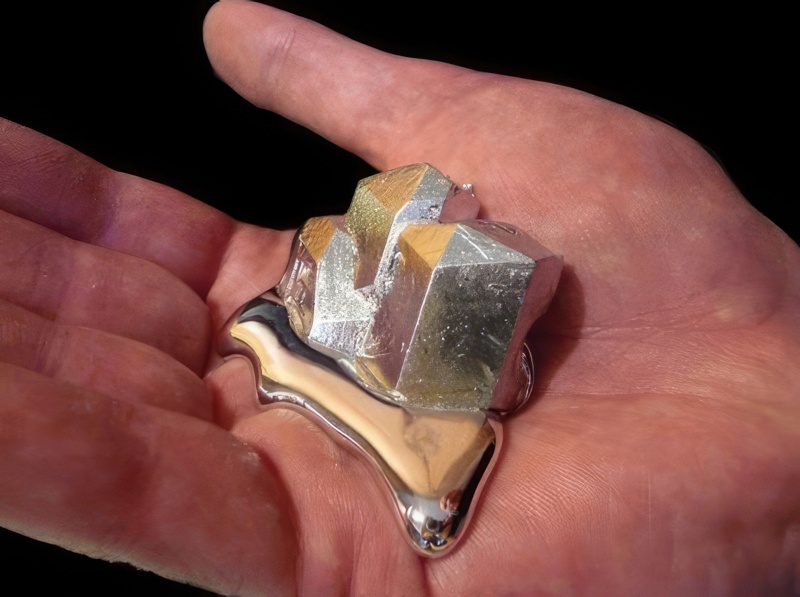
Gallium has never been considered a proper metal for producing a functional-looking sword. An edged weapon resembling a sword could be fashioned from it, but it would be extremely rough and entirely devoid of sharp sides.
Though sturdy, the Gallium sword would likely break under the impact of a swing or a block. It is not hard enough to shatter and break into pieces, but it may bend like plastic or gold. If exposed to higher temperatures, it would quickly melt, rendering it useless.




